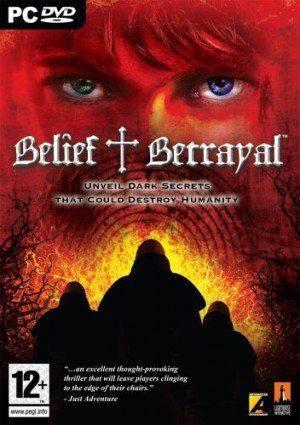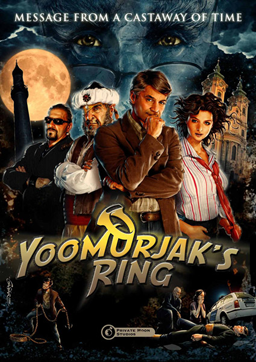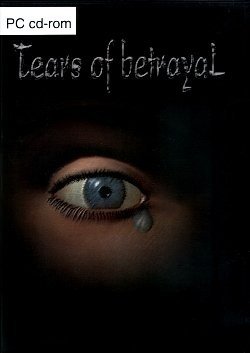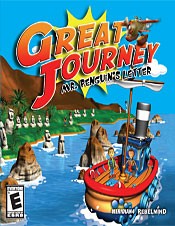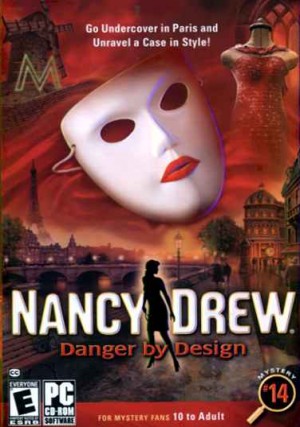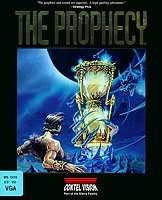Review for The Adventures of Willy Beamish page t
In 1990, Sierra On-Line acquired partner development studio Dynamix. With this new studio came a different group of programmers and designers, and a different style of games. Adventures like Heart of China and Rise of the Dragon were more serious in tone than many previous Sierra efforts, and featured distinct interfaces compared to their Quest series counterparts. Ironically, perhaps the most endearing game to stem from this partnership, and certainly the one that left the biggest impression on me, was 1991’s The Adventures of Willy Beamish. Created by Dynamix co-founder Jeff Tunnell, it is a traditional point-and-click comic adventure that comes as close to the familiar Sierra style as Dynamix ever got in their time together. Coupling high-quality cartoon visuals with an odd sense of humour, the adventures of its youthful protagonist are filled with exaggerated events and peculiar twists. It has a few troublesome gameplay issues along the way, but the game is packed with more than enough fun elements to keep you glued to the screen.
Following the exploits of a teenage boy over the space of one summer break, players control the titular character Willy, wise-cracking videogame addict, and his best friend Horny, a pet frog. Willy dreams of winning the Nintari (no obvious brand names there, right?) videogame championship, and with it a huge cash prize. However, just as things are looking good for Willy and his family in their high-priced suburban family home, something begins to turn sour in the fictional town of Frumpton. From here on in, events get stranger and stranger, including the appearance of vampire bats, ninjas, sludge and super-powered frogs in Lederhosen. To top things off, Leona Humpford – resident millionaire and owner of the town’s biggest employer, the Tootsweet sweetener factory – plans to cripple the town economy in order to gain control of it for herself. This plan will put the entire population of Frumpton in danger, forcing our young hero to rather unwittingly save the day.
Other important characters in Willy’s adventures are his parents and two sisters, the elder Brittany and younger Brianna. The ghost of Grandpa Beamish also appears at opportune times, acting as a conscience to Willy when presented with a difficult decision to make. Willy’s friends, Dana and Perry, hang out at the treetop clubhouse and will also help you along the way. Then there is a whole host of bad guys, punks and criminals doing their best to halt your progress. Other supporting characters include caricatures of TV reporters and celebrities, their archetypes ramped up in order to match the storyline. The varied cast is nicely developed and well rounded, and conversations are smart and funny. In particular, the Japanese family who cannot quite understand what Willy is trying to say produces a lot of amusing – if a little stereotypical – moments. But this whole game is played out like an episode of The Simpsons, so stereotypes are intentionally perpetuated.
After a brief opening cinematic where Willy causes a school assembly to go disastrously wrong, he is thrown straight into detention. To make things worse, report cards are being mailed home today and Willy wants to get back before his parents have the chance to read it. So there is only one thing for it: escape. Even at this early stage of the game, there are many options available with several different outcomes depending on what you decide to try, as the obstacles can be solved in more than one way. This adds an exciting element of personal freedom to the proceedings. The variety of resolutions does peter out as you get further along, as the game becomes more and more focused on single solutions. It’s unfortunate that the level of choice could not be kept up throughout, but its inclusion can be appreciated even so.
Some of the solutions are more ideal than others, and some have more negative consequences. As was the mantra for other Sierra adventures of the time: “save early, save often”, as death may always be just around the corner. This game does have a system to provide a bit more leeway than most of Sierra’s adventures, however. Willy’s in-game actions impact your “Trouble Meter”, a good/bad gauge. Misbehave or skimp on your chores and the meter will rise. If the meter gets all the way to the top, Willy is sent off to Military Camp, and it’s game over. Good actions will drop the meter back to safer levels, though, and ensure you keep on track for the Nintari World Championships. This, in theory, gives players multiple chances to mess up and/or make amends, but certain puzzles still lead to instant failure.
Another interesting feature is that each in-game day follows its own clock. Days don’t pass in real time, but certain actions need to be completed before particular times. If not, either the game will end or the trouble meter will rise. Also, some events will not trigger until the clock has reached a specific hour. This can be controlled by the player too. For instance, if you feel you have completed all the tasks necessary for one evening and don’t want to wait around until bedtime, the fast forward buttons allow you to skip ahead by minutes or hours. Of course, this can also work to your disadvantage. You could skip too far ahead and get in trouble for things like missing your bedtime, and this affects your naughty meter accordingly.
Aside from these distinctive features, the game is a fairly easy one to pick up and play. Control differs from Sierra’s standard method of cycling actions, as you are always equipped with a move cursor unless hovered over something you can manipulate. When interaction is possible, the cursor changes to the appropriate context-sensitive action automatically. There is also always the option to right-click, which brings up a look icon useful for examining your surroundings and providing some small hints on occasion. Dialog trees do appear on occasion, but most conversation is automatic and depends on your actions rather than picking lines to speak. The only time you really need to choose your lines carefully is when dealing with the school bully, who will need some appeasement to allow Willy to pass unscathed. The boxed game manual is more for fun than a useful reference guide, but be forewarned that one in-game puzzle requires its use to obtain information.
The inventory system is handled through Willy’s backpack, which is easily accessed when needing to grab an item quickly. Puzzles requiring inventory combinations are few and far between, as most solutions are straightforward to perform, simply needing one item used on another within a scene. What is less straightforward is the mental jump often needed to reach an illogical solution. A hall pass written in one colour is good, but another colour is bad for no obvious reason. And if you had five seconds to grab a calendar, would you click the calendar on the wall or a pile of papers on the counter? Sometimes the less rational solutions are the correct ones, and this can be difficult to get your head around.
Another complaint that may be levied at the game is the inclusion of several timed and action-based sequences. These elements are a huge bug-bear for some adventure gamers, and when you add to the equation that some of the timed events require split-second pixel hunting, you have a recipe for irritation. Many of them require throwing an item at an enemy using a target reticule that pops up when the correct item is equipped, or pushing a button on screen before you are captured by a pursuer. If you know what is needed to pass, these are simple, but for new players it comes down to a lot of trial-and-error. You simply do not have time to think in most of these cases. Elsewhere, the implementation of some of the action sequences – a frog jumping contest in particular – is confusing. In this case, the screen and interface change entirely, but with no explanation of how the new controls work. The race simply starts and the player has to guess how to use the interface before it’s too late. After several replays, most of these sequences will be manageable even by those with slower reactions, but it can definitely be off-putting at first.
Where the game really makes an impact is with its visuals. Willy Beamish is one of the earliest examples of an adventure game trying to recreate the look of a cartoon. In fact, an early demo boasted that the graphics were drawn by animation talent from The Simpsons, Johnny Quest and The Little Mermaid. Impressive company indeed. Cutscenes are of particularly high quality and feature large, bold sprites that really highlight the characters and allow a range of emotions. In-game animation and character models are also very good, including humorous little details such as Willy’s dad preparing for his first day of work wearing nothing but socks, suspenders and his underwear. Backgrounds are detailed hand-drawn efforts, to the kind of high standard expected in Sierra games of that time, comparing well even to later efforts like Freddie Pharkas. There is a variety of both the mundane and the spectacular in the choice of locations, which range from the local Pizzeria and the treetop clubhouse to the futuristic Tootsweet Factory and the plush Humpford Mansion. In an obscure Easter egg, you can even make it into the Twilight Zone, though it does result in a game over situation.
I cannot make a full judgement on sound, as I have never had the opportunity to play the CD-ROM talkie version of the game, which added voices and a full background musical soundtrack. The game was originally released on floppy disk with basic sound effects that were fair for the time. The music is quite catchy, especially the title theme, but unfortunately the tracks do not feature extensively, really only to accentuate moments of dramatic tension or action. The silence in other scenes is disappointing, as the music certainly adds to the atmosphere when present.
Despite being nearly two decades old, The Adventures of Willy Beamish produces a near-TV quality experience, with a nicely paced story and well written dialogue. There are a lot of short cutscenes used to progress the narrative, and perhaps control shouldn’t be taken away from the player on so many occasions, but the quality of animation and comedy is usually high enough to accept this fact. Puzzles range from straightforward to completely ridiculous, but shouldn’t stump any users for too long. My latest playthrough took me two or three hours, but I have completed it before, so expect to spend at least twice that long getting through the first time. Multiple puzzle solutions do add a little extra replay value, and some cutscenes may only be seen that way, but there is only one possible final outcome. The action elements can be frustrating, but are quickly overlooked in between some really inventive and humorous sequences. A sequel was once planned that would follow a teenaged Willy as he went through high school, but it never came to fruition, which is a shame. Such a strong cast deserved a second outing, but at least Willy’s earliest adventures are still available today, and are certainly worth a few hours of your time.


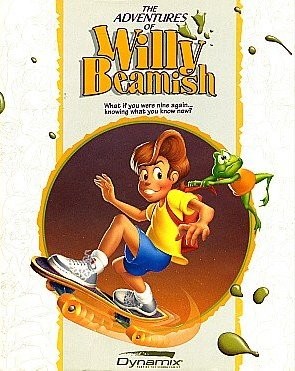
_capsule_fog__medium.png)




